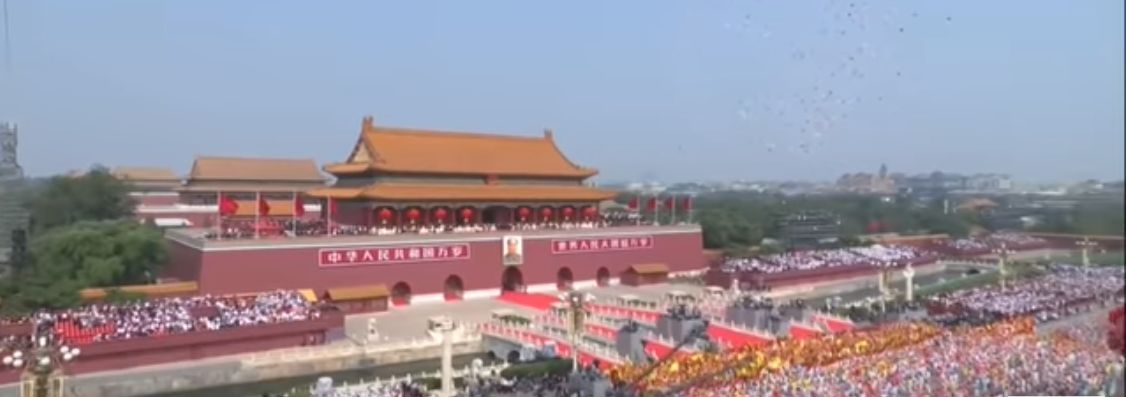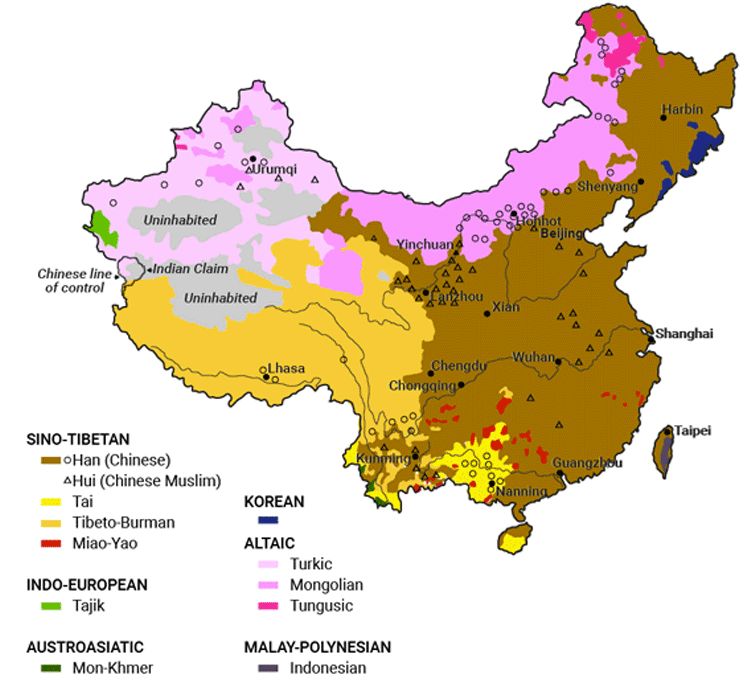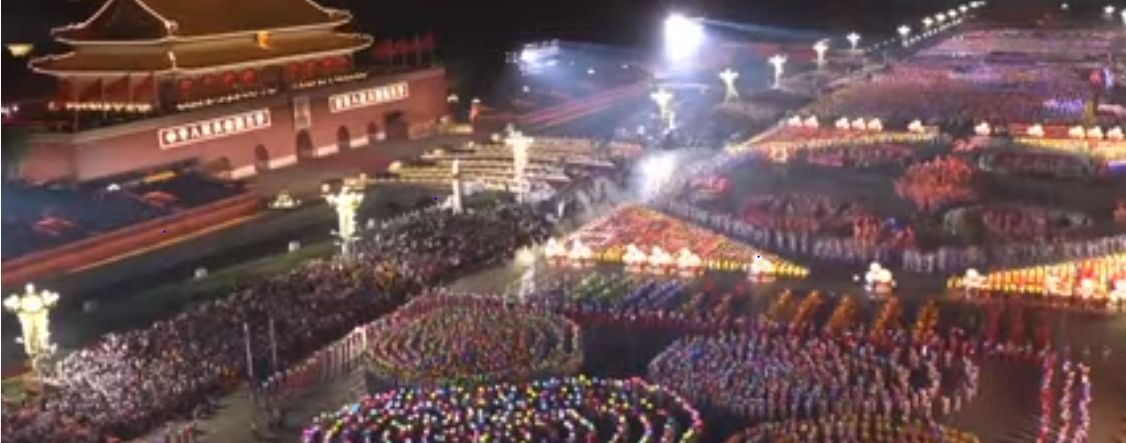By Eric Vandebroeck
Underneath the
beginning of the Gala performance in Beijing with performers from ethnic
minority groups in traditional costume during China’s 70th National Day.

Understanding modern China.
Central to the
self-understanding of the Chinese leadership today is the
concept of Han Chinese an idea
that derived from the Song period when the first form of diplomatic cosmopolitanism
was conceived. It was during the described Song period that Chinese
colonists spread relentlessly southward, recurrently provoking armed opposition from tribal
groups in their path.
One challenge faced
historically by the agricultural and stationary Han civilization was that it
was surrounded to the north and west by nomadic tribes, with fluctuating
borders and populations in the mountains and dense forests to the south. To
secure the Han core, China historically fought, and occasionally was overcome
by, its neighbors (particularly the powerful nomadic tribes to the north). To
manage its regional position, China established a Middle Kingdom policy whereby it kept neighbors at bay with a parallel
policy of integration and accommodation for the nearby buffer regions while
employing a nominal tributary system to deal with its slightly more distant
neighbors.
It was through
the Han expansion that
China made its first contacts with peoples outside of the traditional Chinese
sphere, as its emissaries reached as far as Parthia (in modem Iran), China
developed its earliest firsthand knowledge and understanding of
other-particularly Western-cultural worlds. Second, the triumphant military
expeditions implanted the Middle Kingdom idea firmly and visibly in the
Chinese the worldview of international relations, in which China was the center and superpower of the
world and other peoples and countries were referred to only in a tributary and
subordinate terms.
Throughout its history, China’s boundaries underwent
constant fluctuations.
Thus the ruling political party of the People’s Republic
of China’s current allegiance to the unchanging never-never land of a timeless
past is clear in its delineation of China’s borders, based on the furthest
reaches of a Manchu-led empire, the Qing, but claimed to be eternal and
perpetually “Chinese.”
But it is the Maoist
period that largely shaped China’s contemporary boundaries and geopolitical
landscape. The internal weakening of the Qing Dynasty in the 18th and
19th centuries provided ample opportunities for
imperial exploitation of China by Europe and later Japan.
One of Beijing’s
greatest fears about the buffer regions stems from the manner
in which China assimilated them into the country. Unlike the Soviets,
who moved non-Russian ethnic groups around to avoid contiguous ethnicities
across borders, China moved Han Chinese into the buffer regions, slowly
diluting the local populations. China still fears Pan-Turkic movements spreading through Central Asia
into Xinjiang; large, organized ethnic Tibetan populations in India; Inner
Mongolian herdsmen potentially seeking reunification with Mongolia; ethnic
Koreans on the Chinese side of the Yalu River forging ties with a future
unified Korea; and numerous ethnic minority and even
militant groups moving along the borders of Southeast Asia.
China Dialects

The weakness of China
was (and may remain) the internal diversity of geography, history, economic
activity, and regionalism. As noted above, the Han core appears largely
unified, but underneath is extremely complex and fragmented. China has
north-south divisions, coastal-interior divisions, core-periphery divisions,
rural-urban divisions, and increasingly, have-and have-not divisions. Balancing
these differences requires a deft hand at the center. And, with China’s current
economic slowdown, this balancing act is growing more difficult. China’s size
has led to a historic pattern of expansion and contraction based on internal
crises more often than external threats, though as anywhere, severe internal
crises can pave the way for external actors to move in.
See also my case
study about the new nationalism project started following the 1989 Tiananmen
crackdown.
What also should be
noted is that China’s economic success has broken its self-sufficiency. Now, it
imports at least as much of its key industrial commodities as it produces.
Foreign trade is a vital piece of China’s economic activity, even as the
country attempts to drive its economy toward a domestic consumption model.
Outbound investments provide access not only to markets and resources but also
to technology and skills. This has compelled China to seek ways to secure
its vulnerable supply lines, expand its maritime presence and extend its
international financial and political presence.
Gala performance with performers from ethnic
minority groups in China
later in the evening:

For updates
click homepage here